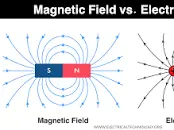Electronic Components and Motor
-
Electric Motor Explained: Working Principle, Diagram, Types & Real-Life Uses
🔍 Definition of Electric Motor An electric motor is a device that converts electrical energy into mechanical energy. It works based on the principle of electromagnetism — when a current-carrying...
-
Top 5 Best Powerful Explanation Faraday’s Laws of Electromagnetic Induction
Faraday’s Laws of Electromagnetic Induction is a fundamental principle in physics that describes how a changing magnetic field can induce an electric current in a conductor. This phenomenon, discovered by...
-
Lorentz Law Explained: Definition, Formula, Diagram & 5 Real-Life Applications
📖 Definition of Lorentz Law Lorentz Law states that a charged particle moving in a magnetic field experiences a force perpendicular to both the velocity of the particle and the...
-
Lenz’s Law: Definition, Formula, Diagram, and Real-Life Applications Explained
Lenzs Law : Lenz’s Law states that: “The direction of the induced current is such that it opposes the change in magnetic flux that produced it.” This law helps us...
-
Magnetic Field – Definition, Properties, Diagram, Applications & FAQs
🔍 What is a Magnetic Field? A magnetic field is a region around a magnetic material or a moving electric charge within which the force of magnetism acts. It is...
-
Top 11 Properties of Electric Field Lines Explained with Examples for Class 10 Students
Properties of Electric Field Lines Properties of Electric Lines of Force
-
Electric Field – Definition, Formula, Diagram & Real-Life Applications for Students
Electric Field : An electric field is a region around a charged object where other electric charges feel a force. It is an invisible force field that can either attract...
-
Fuse in Electrical Systems – Definition, Types, Working Principle, Advantages & Uses
A fuse is a crucial electrical safety device used to protect circuits from excessive current flow. It acts as a barrier between your appliances and potential damage due to overload...
-
🔌 Circuit Breaker: Definition, Types, Working Principle, Circuit Diagram, Advantages & Uses
Circuit Breaker A circuit breaker is an automatically operated electrical switch designed to protect an electrical circuit from damage caused by overcurrent, overload, or short circuits. Its basic function is...









